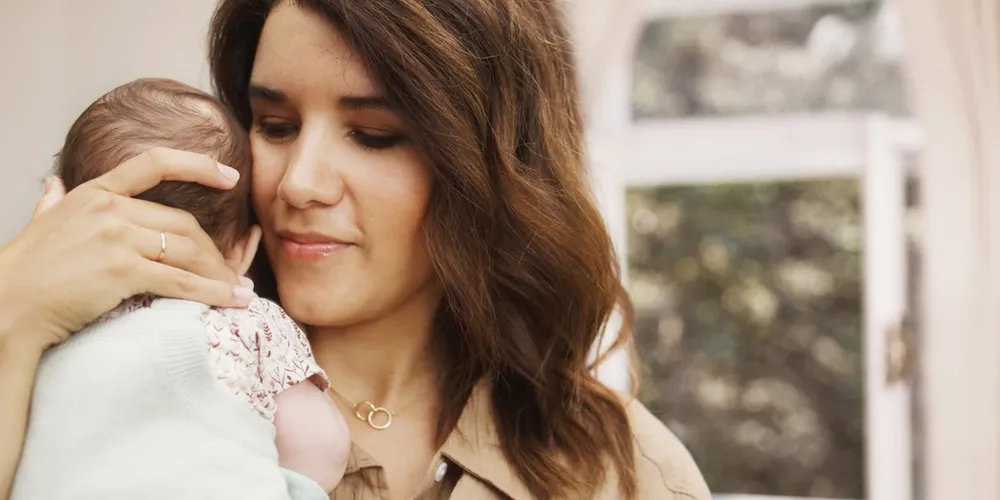Breastfeeding is great – and so are pacifiers and bottles. But what about nipple confusion? Is it real? MAM-expert Professor Reinhold Kerbl, head of Department of Pediatrics and Adolescent Medicine at the Regional Hospital Hochsteiermark (Austria), tells us all about it.
Baby's sucking urge and reflex
Babies come into the world with certain reflexes. They usually look for the breast just a few moments after birth. Guided by their sense of smell, they root their way to the nipple to try sucking for the first time. Nevertheless, it is assumed that effectively emptying the breast is a technique that babies must first learn to perfect.
There is a debate among experts as to whether switching between artificial nipples such as bottles or pacifiers and the breast at the beginning of the breastfeeding relationship can lead to the newborn baby failing to learn or forgetting to feed properly at the breast. In fact, there are almost no meaningful studies on the subject of "nipple confusion". As a specialist, Professor Reinhold Kerbl knows more about this:
Definition of nipple confusion
"The term usually refers to the fact that the baby bottle and pacifier have a negative influence on breastfeeding. Infants may be so "confused" by the use of baby bottles or pacifiers that they reject the breast or have problems with the sucking technique during breastfeeding," explains Professor Kerbl. However, the original medical definition of the term "nipple confusion" was different: It previously referred to specific behavior by the infant where the baby turns away from the breast or refuses to take the nipple.
The American pediatrician Marianne Neifert took a closer look at the topic in 1995 and defined two types of babies:
# Type A:
Newborns who have a problem putting the breast in the mouth correctly and are unable to develop a sucking technique to draw milk out of the breast. The mother may find that this type of nipple confusion results in sore nipples. The breast may feel full after breastfeeding because it has not been emptied. This can result in blocked milk ducts or mastitis.
# Type B:
Babies who previously fed well on the breast suddenly reject the breast or prefer the bottle.
"Nipple confusion" from a medical perspective
According to Professor Kerbl, the term "nipple confusion" is rarely found in scientific literature – an indication that there is little systematic research on the subject. The available studies on bottle feeding do not show whether less breastfeeding took place because the bottle was used, or whether breastfeeding did not work and milk substitutes were therefore used.
"No conclusion can be drawn from existing studies as to whether or not bottle feeding affects breastfeeding."
(Professor Reinhold Kerbl)
The situation is similar when it comes to pacifier studies: 6 out of 10 studies could not find a connection between the use of pacifiers and breastfeeding. Four studies showed a lower duration or rate of breastfeeding. However, as the question was inconsistent and no causes were investigated, it is not possible to clearly determine whether the pacifier influenced breastfeeding or whether there were other reasons.
Looking at the top five studies (Level I-A) on "nipple confusion", four of them conclude that the condition does not exist.

What the WHO and pediatricians' associations say
The WHO advises breastfeeding exclusively in the first 6 months of life, reports Professor Kerbl. However, if you take a close look at the WHO recommendation, the original English text recommends that mothers should be advised to breastfeed in combination with a pacifier and bottle rather than be advised against it. The American Academy of Pediatrics (APA), an organization of 67,000 pediatricians, also recommends pacifiers to reduce the risk of sudden infant death syndrome.
The advice for parents from Professor Reinhold Kerbl
What is clear is that breast milk is the best form of nutrition for babies. Breastfeeding is therefore definitely recommended until the age of 6 months as a minimum. "Complementary bottle feeding is only necessary when exclusive breastfeeding is not possible. However, parents do not need to put unnecessary pressure on themselves," reassures Professor Kerbl.
A few bottle feeds during the first few days do not have a negative effect on breastfeeding. The pacifier, in particular, can be a real help for parents of babies that have a constant urge to suck – and there is no need for a guilty conscience, says Professor Reinhold Kerbl. From a medical point of view, there is no reason to discourage parents from using pacifiers. The only important thing is that a good-quality pacifier is used and that weaning begins by the age of 3.
Photos: Shutterstock
Sources:
Zimmerman, Emily & Thompson, Kelsey. (2015). Clarifying nipple confusion. Journal of Perinatology. 35. 10.1038/jp.2015.83.




























